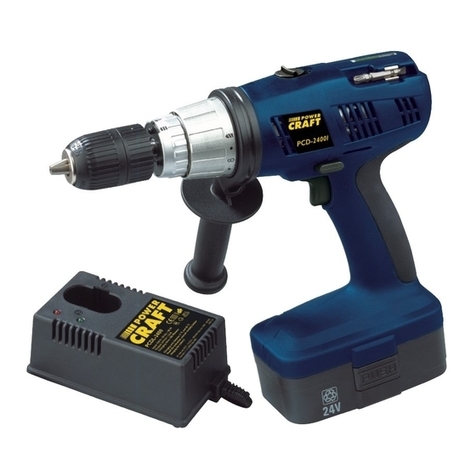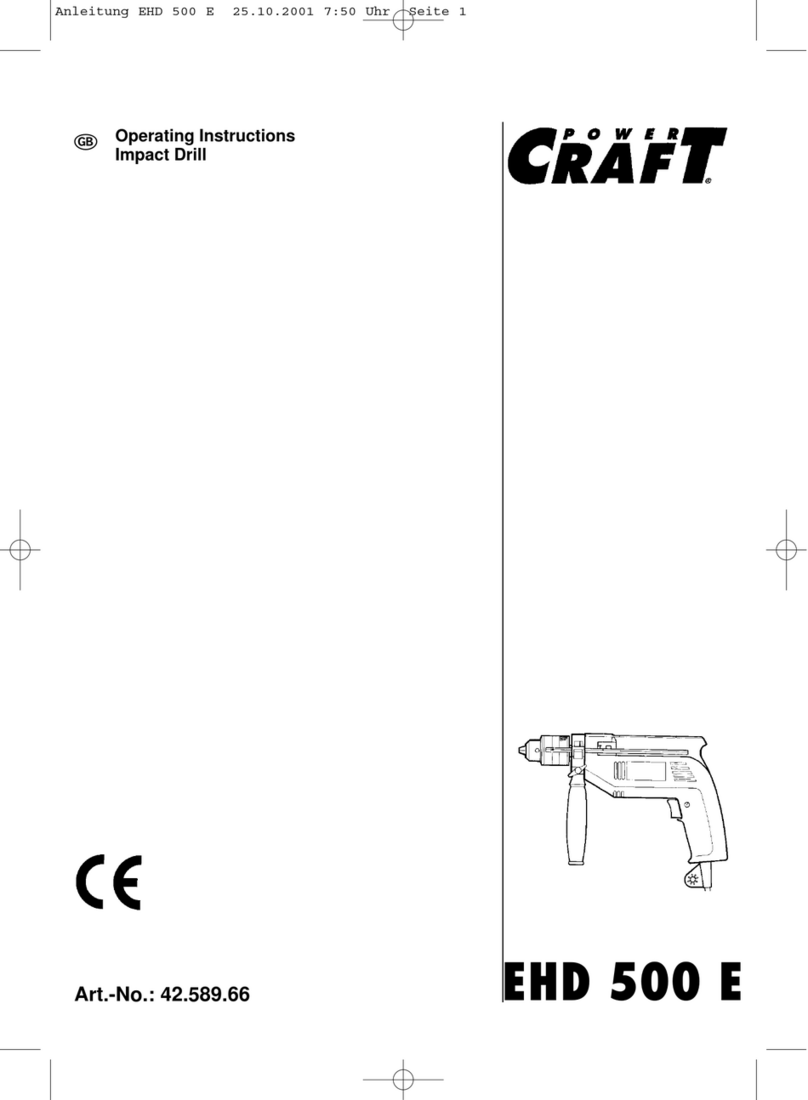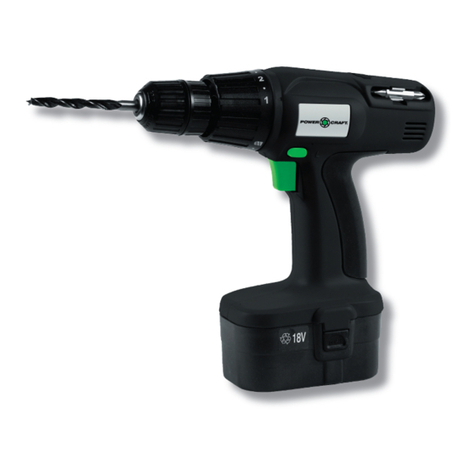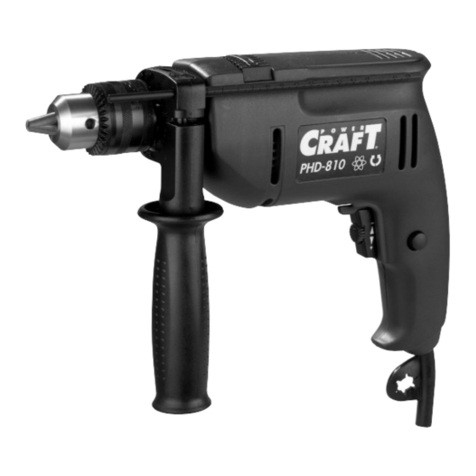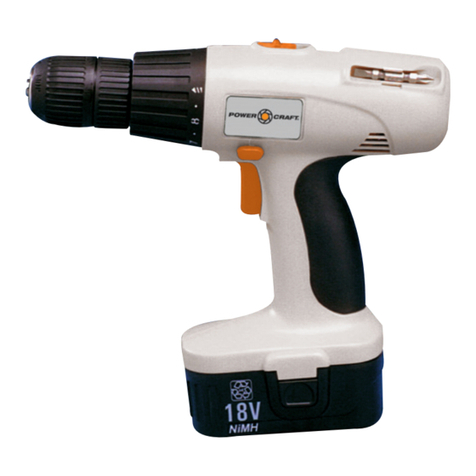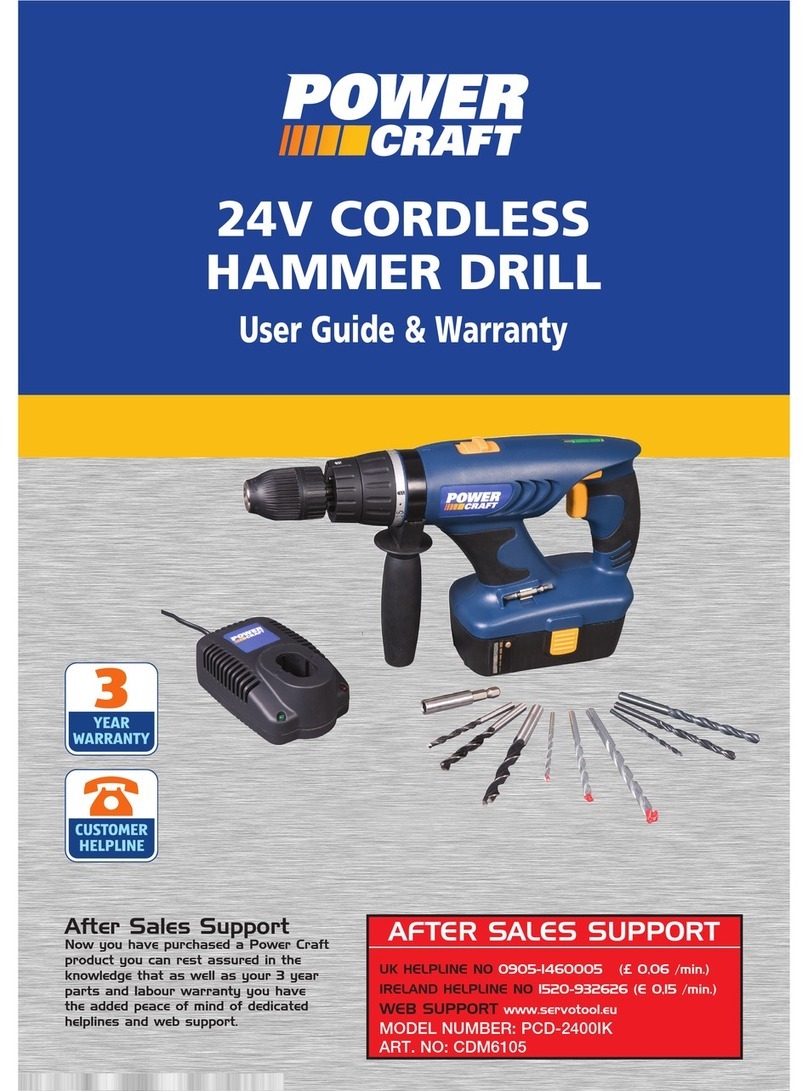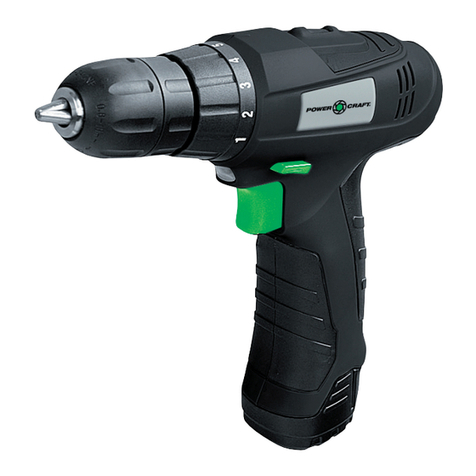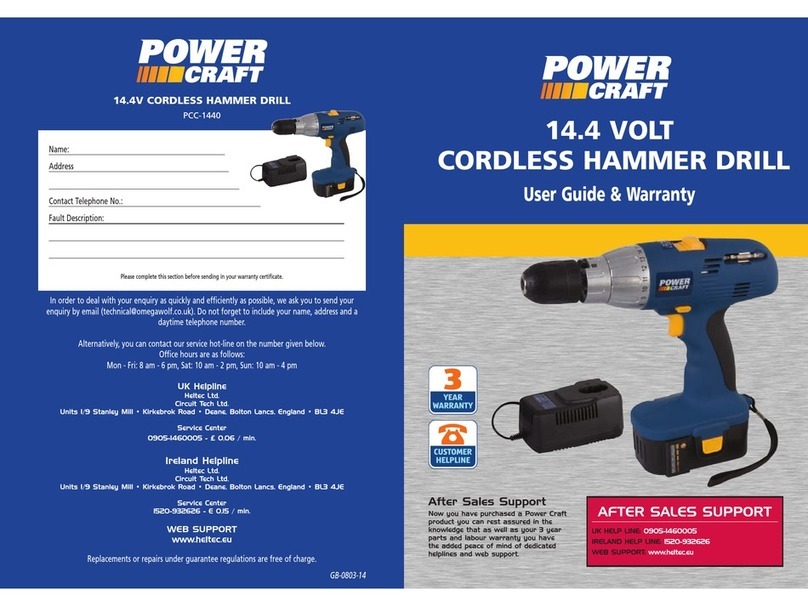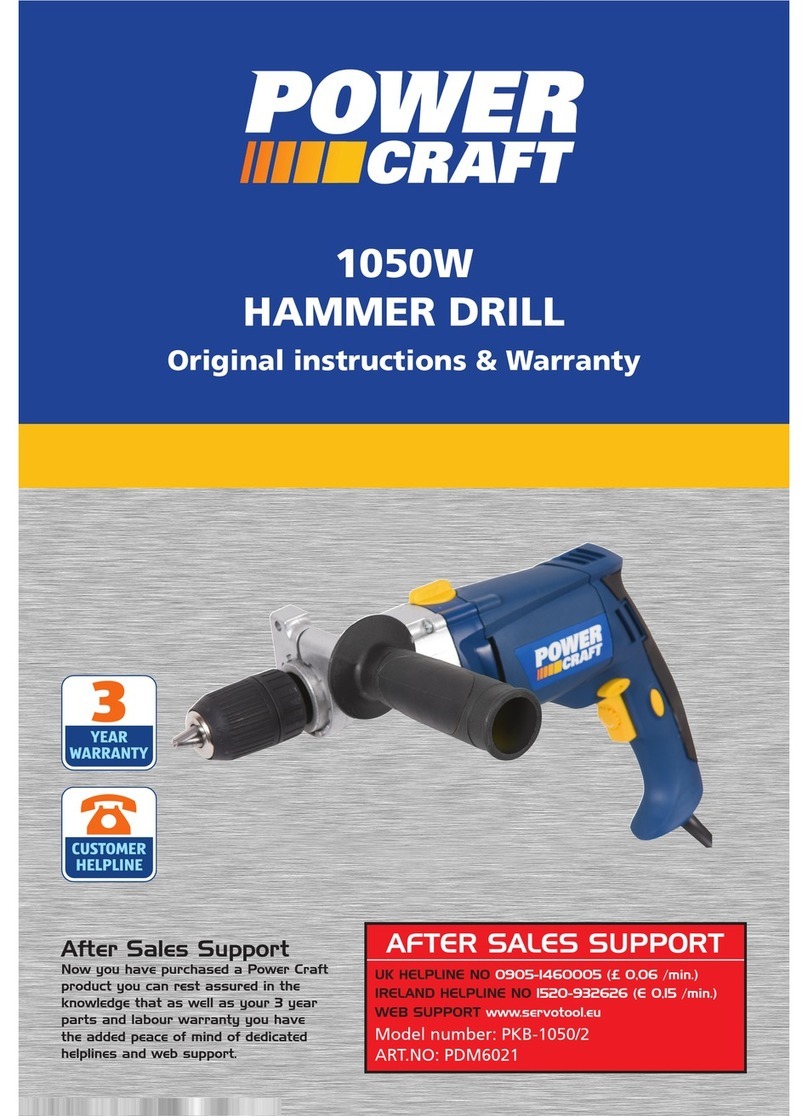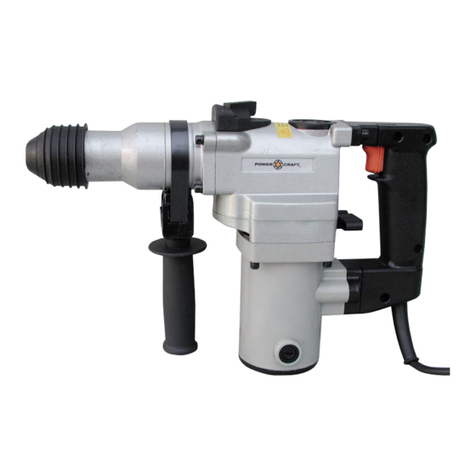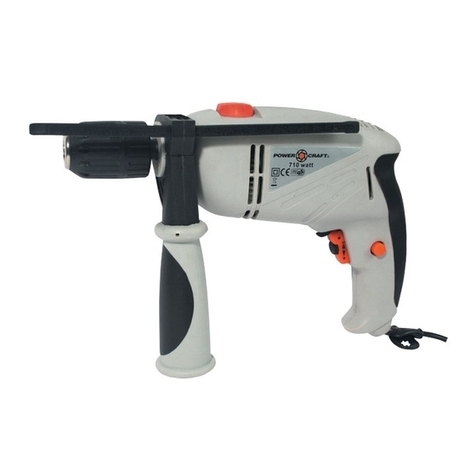Powercraft 13
Charging the battery
Fig. F
The KDDL-1800 charger is only suited for charging KDDB-1800 batteries.
• Insert the battery (5) into the charger (12) as shown in the drawing. Take care to observer
the + and – polarity markings.
• Plug the charger power plug into the power socket. The red quick-charge lamp (14)
illuminates.
• Charging is completed once the green maintenance charge lamp (10) on the other side of
the charger illuminates. The battery is now ready for use.
• The energy display (8) on the battery case provides information on the charge level of the
battery. Press the push button (11).
The coloured display has the following meanings:
• All coloured bars illuminate (red-yellow-green): the battery is fully charged
• The red and yellow coloured bars illuminate: the battery is partially charged
• The red coloured bar illuminates: the battery is discharged and must be recharged.
Always use the charger in a dry environment and only at ambient temperatures
between 5 ºC and 40 ºC.
The battery for your drill is delivered in an uncharged state. It must be charged for approx. 1 – 2
hours to reach full power before first use.
The final capacity of the battery is reached after 4 – 5 charge/discharge cycles.
Discharging the battery
Discharging batteries is just as important as charging them, perhaps even more
important.
• Once the battery is charged, the cordless drill must be used until you notice that the power
of the drill fades and the maximum speed is no longer reached.
• The battery is almost discharged. Only now should the battery be recharged.
• If you recharge the battery when it still has (e.g.) one third remaining power, then the so-
called “memory effect” can occur. When charging, only the discharged part of the battery is
activated and crystallisation can occur in the third that is still charged. This makes this part
of the battery capacity unusable.
• You should also never completely discharge the battery. You should recharge the battery
as soon as you notice that the power or maximum speed of the drill begins to fade. If you
continue using the drill until the battery is completely discharged, the so-called “polarity
reversal effect” can occur. This reverses the polarity of the battery terminals, i.e. “+”
becomes “-“ and “-“ becomes “+”. Once this effect occurs, the polarity remains swapped on
charging. The battery is irreparably damaged and must be replaced.
Instructions for optimum results
• Always hold the device and the screwdriver bit in a direct line with the screw and always use
the correct type of screwdriver bit in the correct size.
• If screws are difficult to screw in, then use a small amount of soap on the screw as a
GB
D
NL
F
E
P
I
S
SF
N
DK
Powercraft
power tool. Do not use a power tool while you are tired or under the influence of
drugs, alcohol or medication. Amoment of inattention while operating power tools may
result in serious personal injury.
b. Use safety equipment. Always wear eye protection. Safety equipment such as dust
mask, non-skid safety shoes, hard hat, or hearing protection used for appropriate
conditions will reduce personal injuries.
c. Avoid accidental starting. Ensure the switch is in the off position before plugging in.
Carrying power tools with your finger on the switch or plugging in power tools that have the
switch on invites accidents.
d. Remove any adjusting key or wrench before turning the power tool on. Awrench or a
key left attached to a rotating part of the power tool may result in personal injury.
e. Do not overreach. Keep proper footing and balance at all times. This enables better
control of the power tool in unexpected situations.
f. Dress properly. Do not wear loose clothing or jewellery. Keep your hair, clothing and
gloves away from moving parts. Loose clothes, jewellery or long hair can be caught in
moving parts.
g. If devices are provided for the connection of dust extraction and collection facilities,
ensure these are connected and properly used. Use of these devices can reduce dust
related hazards.
h. Use clamps or a vice to hold work. It’s safer than using your hand and it frees both hands
to operate tool.
4) Power tool use and care
a. Do not force the power tool. Use the correct power tool for your application. The
correct power tool will do the job better and safer at the rate for which it was designed.
b. Do not use the power tool if the switch does not turn it on and off.Any power tool that
cannot be controlled with the switch is dangerous and must be repaired.
c. Disconnect the plug from the power source before making any adjustments,
changing accessories, or storing power tools. Such safety measures reduce the risk of
starting the power tool accidentally.
d. Store idle power tools out of the reach of children and do not allow persons
unfamiliar with the power tool or these instructions to operate the power tool. Power
tools are dangerous in the hands of untrained users.
e.
Maintain power tools. Check for misalignment or binding of moving parts, breakage of
parts and any other condition that may affect the power tools operation. If damaged,
have the power tool repaired before use. Many accidents are caused by poorly maintained
power tools.
f. Keep cutting tools sharp and clean. Properly maintained cutting tools with sharp cutting
edges are less likely to bind and are easier to control.
g. Use the power tool, accessories and tool bits etc., in accordance with these
instructions and in the manner intended for the particular type of power tool, taking
into account the working conditions and the work to be performed. Use of the power
tool for operations other then those intended could result in hazardous situations.
5) Battery use and care
a. Ensure the switch is in the off position before inserting battery pack. Inserting the
battery pack into power tools that have the switch on invites accidents.
b. Recharge only with the charger specified by the manufacturer.Acharger that is
8
GB
D
NL
F
E
P
I
S
SF
N
DK
